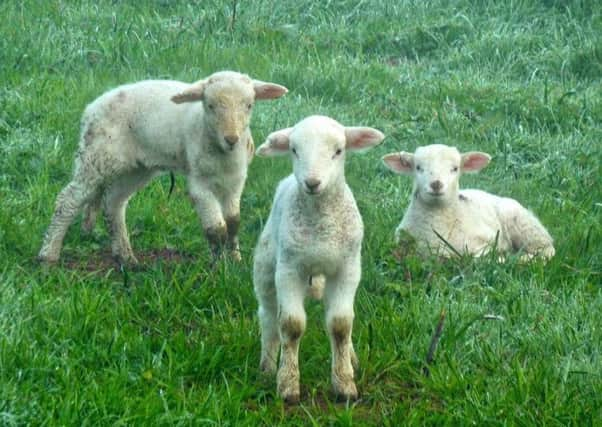Schmallenberg Virus found in Scotland


The diagnoses were confirmed by SAC Consulting Veterinary Services (part of Scotland’s Rural College) and follows the increasing numbers of affected lambs identified in England and Wales throughout the winter of 2016/2017.
SBV is spread by midges and if infection occurs for the first time in pregnant sheep (broadly in the second month of pregnancy and slightly beyond and in cattle broadly in months three to five of pregnancy and slightly beyond), damage to the developing central nervous system occurs. This results in brain and limb deformities in the new born lambs and calves, which are not compatible with life.
Advertisement
Hide AdAdvertisement
Hide AdGeorge Caldow, head of SAC Consulting Veterinary Services said: “It can be difficult to predict how widespread any infection will turn out to have been or to be but there are some important points that give us an indication of the likely impact that SBV infection will have this spring on Scottish livestock. In winter 2016-2017 SRUC vets have not diagnosed SBV in either early lambing flocks in Scotland or in all year round calving dairy herds in Scotland.
“It is therefore inferred that at the time of maximum midge activity in 2016 there was unlikely to have been SBV present in the midges in Scotland otherwise we would have seen cases in these two categories of animals.
“The midge population progressively declines as we move in to winter and midge numbers will have been low during the time of maximum vulnerability of the main Scottish spring lambing flock, which is likely to have been December and January. Therefore it may be that only small number of ewes will have been infected with few affected lambs being born and these are more likely to be in flocks in the southernmost part of the country.
“The limited information we have to date suggests that the midge population in some parts of southern Scotland became infected in late autumn probably due to the gradual spread north of infected midges.”
Advertisement
Hide AdAdvertisement
Hide AdLooking ahead, SAC Consulting vets expect the higher risk will be to cattle mated in the summer of 2017 and at the edge of the northward progression of infected midges. As in the previous epidemic it may be that only very limited spread of infected midges will occur in Scotland.
Experience of the disease elsewhere has shown it to have a patchy distribution with some areas having very little evidence of infection despite the disease being present in adjacent locales.
Farmers seeking advice on possible incidents of SBV in their animals are advised to speak to their vet. SAC Consulting Veterinary Services offers a full range of tests at their disease surveillance centres to explore and confirm whether SBV has been the cause of malformed lambs or calves.